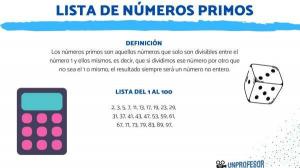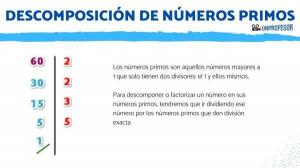What are SQUARE numbers

In this new lesson that we bring you today on the website of a Teacher, you will be able to understand what are square numbers and, in addition, we are going to give you examples so that you have no doubts. We will see how to calculate the next square number of a given number and some properties of these. At the end of the article you will also find an exercise and its solution, so that you can verify that you have understood what has been explained.
Square numbers are those that have as square root a Natural number. That is, when we take the square root of that number, the result is 1, 2, 3, 4, 5... Therefore, the square numbers are not the result of the root, but the number that we put inside the root so that the result is a natural number.
In other words, a number is square when it is a whole number and, at the same time, it is a square of some other number.
They are called squares because with them you can draw this figure sI order it in small squares. For example, if we take a notebook with squared sheets, we can see it easier: you can draw a square if you choose a single little square, if you choose four little squares, if you choose 9 little squares... Therefore, 1, 4, and 9 are square numbers.
We are going to leave the First 30 examples of square numbers:
0, 1, 4, 9, 16, 25, 36, 49, 64, 81, 100, 121, 144, 169, 196, 225, 256, 289, 324, 361, 400, 441, 484, 529, 576, 625, 676, 729, 784, 841.
As you may have realized, they are the result of raise each natural number to two, that is, zero by zero, one by one, two by two, three by three ...
To calculate what the square numbers are, you can also do adding the odd number to the previous square that it touches, starting with zero, like this:
- 0 + 1 = 1 -> The first square number is zero, we add the first odd number which is 1 and it gives us 1.
- 1 + 3 = 4 -> To the previous square, that is, to 1, we add the next odd number after 1 and it gives 4.
- 4 + 5 = 9 -> To the previous square, that is, to 4, we add the next odd number after 3 and it gives 9.

If we have a number of which we want to calculate its square, looking at your last digit we can find out the following characteristics:
- Last digit = 0: the square number will end in 00 and the previous numbers also constitute a square.
- Last digit = 1 or 9: the square number will end in 1 and the previous numbers will form a multiple of 4.
- Last digit = 2 or 8: the square number will end in 4 and the previous numbers will form an even number.
- Last digit = 3 or 7: the square number will end in 9 and the previous numbers will form a multiple of 4, as it did when the last digit was a one or a nine.
- Last digit = 4 or 6: the square number will end in 6 and the previous numbers will form an odd number.
- Last digit = 5: the square number will end in 25 and the previous numbers will form an even number.
In this way, There is no whole perfect square that ends in 2, 3, 7, or 8.

Image: Averroes blog
Now that you have come this far, let's check that you have understood what square numbers are:
- Select which of the following numbers are square numbers: 540, 81, 175, 425, 625, 169, 200.
- What do the following numbers have in common that makes it possible for us to say, at a glance, that they are not square numbers: 21,322, 77, 563, 74,295,628.
Let's see the solutions:
- The square numbers are 81, 625, and 169.
- What they have in common is that they end in 2, 3, 7 or 8, so we can tell, at first glance, that they are not square numbers, since there are no square numbers that end in these figures.
We hope this lesson has been helpful to you and that you have understood all the concepts that have been explained. If you want to learn more about mathematics, you can navigate through the corresponding tab or through the search engine that you find at the top of the web.



